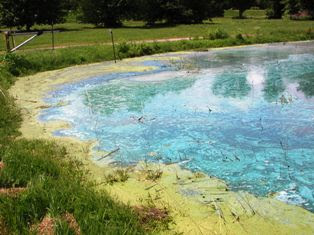

It looks like someone spilled blue-green, blue, and amber paint in some of the quiet coves around the Thompson Lake boat landing. However, this is actually evidence of death of some of the cyanotbacteria (see April 28 post) that has been blooming since April (blue-green and blue pigments) and duckweek (amber bleached-out very small floating plants). Lakes go through a lot of changes in a year, especially if they are going through the transitions involved in restoration.


